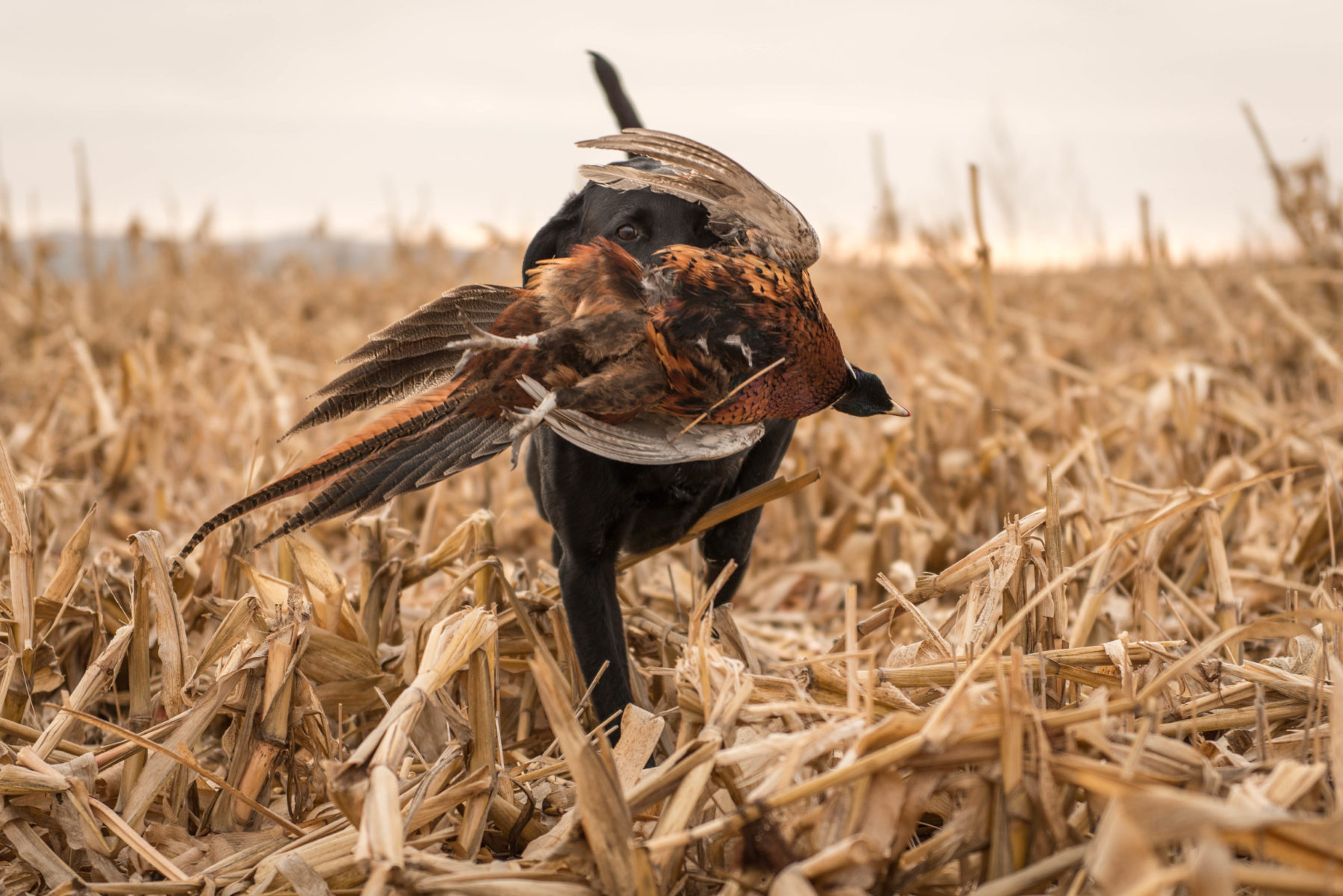The Last Bird

“We might need a second dog.”
The comment, lobbed from behind us in the chaos of the moment, landed like a hand grenade.
“She’s got it,” I barked over my shoulder. I wasn’t entirely sure that was true, but I knew she wanted the retrieve as badly as I wanted it for her, and she’d earned the chance to see it through.
The hunt had been picture perfect to that point. Squinting into the flat western light, Scott had spotted what he’d thought could be a rooster crossing the two-track ahead. The ensuing five-man debate over chasing a “maybe bird” vs. continuing to our destination devolved quickly into friendly truck-to-truck trash-talk.
The back-and-forth ended with Steven throwing down the gauntlet. “Well, are we going to sit here burning daylight, or are you going to go kill this phantom pheasant?”
Kirk and I leapt out without another word and grabbed guns and vests. We decided on bringing a single dog, Sibley, to hunt it up.
Pre-game butterflies fluttered in my chest as we strode past the pick-ups toward the last sunset of our North Dakota pheasant trip. Had the smack-talk, the three-hunter, four-dog spectator gallery, and the five testosterone-laced days in close quarters not already served to artificially inflate the stakes of an otherwise unnoteworthy endeavor, the last jab sliding from Steven’s cab window — “I guess we’ll just settle in to watch the show” — would have sufficed on its own.
I had no idea what, if anything, was down the road, but clearly we had to come back with a bird, or keep walking. Game on.
The dog’s initial disinterest didn’t exactly take the edge off. Thirty yards on, however, her head whipped to the left, her snout dropped to the dirt, and her lackadaisical trot melted into a low-slung stalking hustle. First the left ditch, then the right, Sibley quartered this way and that across the dirt track in front of us, her excitement contagious. She charged straight through the brush on the left for ten yards then wheeled hard right, bounded over the road in two strides, over the right ditch, wheeled back again, crow-hopped once, then torpedoed into a clump of tumbleweed. The rooster erupted right off her snout and across Kirk’s shooting lane.
Bang! One shot. Bird down.
The lab Supermanned between the second and third rungs of the five-wire fence — barbs be damned — as the bird dropped out of sight. Then it was intermittent glimpses of her chopping tail bounding down the fence-row at a dead sprint. Apparently the bird still had two good legs.
Twenty-five, 50, 100 yards, I’d lost sight of her when, finally, the dog came to a stop and popped back into view. She was worrying a tangled stand of scrubby trees along the fence, presumably where the bird had holed-up.
That’s when I nearly scuppered the whole affair. High on adrenaline and the drama of the pursuit I started pouring on the verbal encouragement. She may have mistaken my effusiveness for celebration… the kind reserved for a job completed and well done. I’m not sure. Whatever the reason, she left the trees and started trotting toward me, sans pheasant. This is where the idea of additional, more experienced, canine reinforcement was floated from the rear.
Oh hell no.
“Dead bird!” I called. “Fetch it up!”
Mistaken no more, she reversed course. The bird had taken full advantage of the mishap, though, and resumed his run. Back through the fence, back to full speed, back out of sight she raced. An interminable minute passed before I saw her black tail waving above the weeds again, headed my way.
“She’s got it,” I repeated over my shoulder. I didn’t actually see the bird yet — hadn’t, in fact, since it dropped. I was betting, instead, on what little I could see of her body language, and hoping I was right.
I was. She did. And no matter the flapping wing or the kicking spurs, she wasn’t letting it go again.
“Good dog,” I told her then finished it with a swing, handed Kirk his bird and offered a fist bump.
“Now,” added Scott, as nonchalantly as he could manage “let’s go hunt that ravine.”
Then he slid behind the wheel and fired up the truck.


Way to go, Sibley!
She’s feelin’ the love Aunt Mollie!
Great lesson here for all of us who hunt birds with dogs: With VERY rare exceptions, the smartest thing we can do when our dogs are tracking an active cripple is keep our damn mouths shut. Our dogs’ noses are providing them with all the information they need; we’re just confusing and distracting them.
You know what they say… “The only thing harder than learning from experience is not.”
Lesson learned (I hope).